


A Cleaner Planet, Healthier Home

In a world increasingly concerned about environmental sustainability, the concept of sustainable cleaning solutions has gained prominence. This eco-conscious approach to cleaning emphasizes the use of products and methods that not only clean effectively but also minimize harm to the planet. In this article, we will explore the significance of sustainable cleaning solutions and how they contribute to a cleaner, healthier home and a greener world.
The Importance Of Sustainable Cleaning
Eco-Friendly Ingredients: Sustainable cleaning solutions are formulated with natural, biodegradable ingredients that have a minimal environmental impact. These ingredients break down into harmless substances, reducing water pollution and minimizing harm to aquatic ecosystems.
Reduction Of Harmful Chemicals: Traditional cleaning products often contain harsh chemicals that can have long-lasting effects on human health and the environment. Sustainable cleaning solutions are free from these toxic substances, resulting in cleaner indoor air and less pollution.
Energy Efficiency: Sustainable cleaning practices also involve energy-efficient cleaning appliances. This means reduced energy consumption, which is not only cost-effective but also better for the planet.
Effective Sustainable Cleaning Solutions
Eco-Friendly Cleaning Products: Look for cleaning products with eco-friendly certifications such as the "EcoLogo" or "Green Seal." These products are verified to meet environmental and health standards.
Homemade Cleaning Solutions: You can make your own sustainable cleaning solutions using readily available ingredients like vinegar, baking soda, lemon juice, and essential oils. These natural ingredients are effective for various cleaning tasks and are safe for your family and the environment.
Refillable Containers: Opt for cleaning products that come in refillable containers, reducing the need for single-use plastic bottles that contribute to environmental pollution.
Reusable Cleaning Tools: Invest in reusable cleaning tools such as microfiber cloths and mop heads. These tools effectively capture dirt and dust, reducing the need for disposable cleaning supplies.
Water Conservation: Sustainable cleaning also involves water conservation. Be mindful of the amount of water you use during cleaning, and consider water-saving practices like using a bucket for mopping instead of running water.
The Benefits Of Sustainable Cleaning Solutions
Healthier Indoor Air Quality: Sustainable cleaning solutions do not release harmful volatile organic compounds (VOCs) into the air, leading to cleaner and healthier indoor air. This is particularly important for individuals with respiratory issues or allergies.
Reduced Environmental Impact: By choosing sustainable cleaning solutions, you contribute to reducing water pollution and minimizing the production of harmful chemicals. These choices have a positive impact on the planet and future generations.
Cost Savings: While some sustainable cleaning products may initially seem more expensive, the long-term cost savings are evident. Homemade cleaning solutions and reusable tools can reduce cleaning expenses over time.
Peace Of Mind: Knowing that your cleaning routine is environmentally responsible brings peace of mind and a sense of responsibility toward the planet.
Sustainable cleaning solutions are not just a trend; they are a conscientious choice for a cleaner, healthier home and a more sustainable planet. By adopting eco-friendly cleaning products and practices, you play a part in reducing your environmental footprint and contributing to a cleaner, greener world. A sustainable cleaning routine is a small step that can make a significant difference, both for your family and for the planet.
A Guide To Harnessing The Sun's Energy
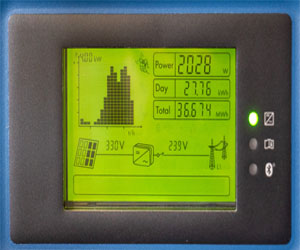 Sunlight Capture: Solar panels, typically mounted on rooftops, capture sunlight using photovoltaic cells. These cells are made of semiconductor materials, usually silicon.
Sunlight Capture: Solar panels, typically mounted on rooftops, capture sunlight using photovoltaic cells. These cells are made of semiconductor materials, usually silicon.
Electricity Generation: When sunlight hits the cells, it excites electrons in the semiconductor material, causing them to move and generate an electric current. This current is direct current (DC).
Inverter Conversion: Most of our electrical devices and appliances operate on alternating current (AC). To make the electricity compatible, an inverter is used to convert the DC into AC.
Energy Use Or Storage: The converted electricity can either be used immediately in your home or stored in batteries for later use, ensuring a constant supply of power even when the sun isn't shining.
Advantages Of Solar Power For Beginners
Environmental Benefits: Solar power is a clean and renewable energy source. It produces no greenhouse gas emissions, reducing your carbon footprint and contributing to a healthier planet.
Lower Energy Bills: By generating your electricity, you'll rely less on traditional utility providers, leading to significant savings on your energy bills.
Energy Independence: Solar panels provide a degree of energy independence. You're less vulnerable to power outages and price fluctuations from utility companies.

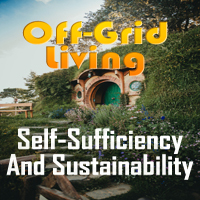
The Hidden Foundation Of Plant Vitality
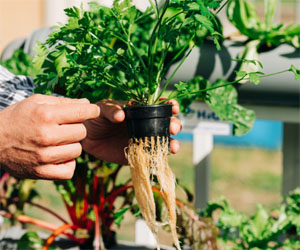 Soil Conditions: Soil quality, structure, and composition significantly affect root health. Well-draining, aerated soil with an optimal balance of organic matter and nutrients is crucial for healthy root development.
Soil Conditions: Soil quality, structure, and composition significantly affect root health. Well-draining, aerated soil with an optimal balance of organic matter and nutrients is crucial for healthy root development.
Nutrient Availability: The availability of essential nutrients, such as nitrogen, phosphorus, and potassium, is essential for root growth. Imbalances or deficiencies can impede root health.
Water Management: Both under- and overwatering can harm roots. Consistent and appropriate watering practices are essential for root vitality.
Disease And Pests: Pathogens and pests can damage roots, leading to root rot or other diseases. Proper plant health management is crucial for preventing such issues.
Aeration: Oxygen is vital for root respiration. Compacted soil or waterlogged conditions can deprive roots of oxygen, leading to poor health.
Temperature And Climate: Extreme temperatures and environmental conditions can stress roots. Plants adapted to specific climates are more likely to have healthier roots.
Implications Of Root Health
Root health has far-reaching implications for plant growth, crop yield, and ecosystem stability:
Enhanced Nutrient Uptake: Healthy roots efficiently absorb essential nutrients, leading to better growth and crop production.
Drought Tolerance: Robust root systems improve a plant's ability to withstand periods of drought by accessing water from deeper soil layers.
Pest And Disease Resistance: Healthy roots are better equipped to defend against pathogens and pests.
Erosion Control: Plant roots stabilize soil and prevent erosion, preserving valuable topsoil.
The Fruits Of Gardener's Labor
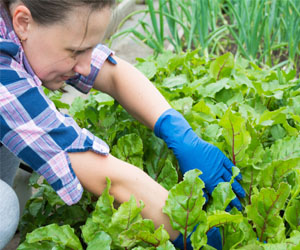 Connection To Nature
Connection To Nature
Gardening is a harmonious dance with nature. Abundant harvests illustrate the beautiful partnership between the gardener and the Earth. Tending to the soil, choosing the right seeds or saplings, watering, and protecting your plants from pests and disease — all these efforts are rewarded by the Earth's generous bounty. The cycles of life in your garden, from planting to harvesting, mirror the larger cycles of nature, and they remind us of our place in the natural world.
Self-Sufficiency And Sustainability
Abundant harvests also represent a move toward self-sufficiency and sustainability. Growing your own food not only reduces your reliance on commercial agriculture but also ensures that you have a fresh and healthy food source right at your doorstep. It empowers individuals and families to take control of their food supply and make environmentally conscious choices. When you produce your food, you reduce the carbon footprint associated with transportation and packaging.
Health And Nutrition
The fruits of abundant harvests are some of the healthiest foods you can consume. Homegrown produce is free from harmful chemicals and pesticides, offering unparalleled freshness and nutrition. These vegetables and fruits are picked at their peak ripeness, preserving their vitamins, minerals, and flavors. When you have an abundant harvest, you have an abundance of wholesome, nutrient-rich foods at your disposal.
Sharing The Bounty
Abundant harvests often lead to an abundance that extends beyond your own household. Gardeners frequently find themselves with more produce than they can personally consume. This surplus can be shared with friends, family, and the community. Sharing the fruits of your labor is a deeply satisfying experience that strengthens bonds and fosters a sense of community.




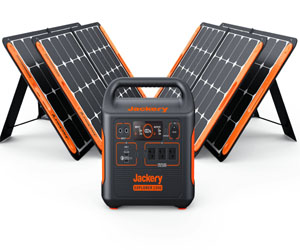

A Cleaner Home And Healthier Planet
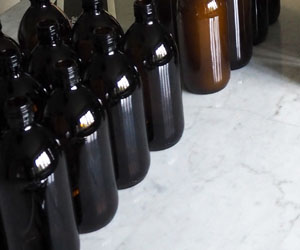 1. Switch To Eco-Friendly Cleaning Products
1. Switch To Eco-Friendly Cleaning Products
One of the simplest and most effective ways to embrace green cleaning is to replace traditional cleaning products with eco-friendly alternatives. Look for cleaning products that have been certified as environmentally safe, such as those bearing the "EcoLogo" or "Green Seal" labels. These certifications ensure that the products meet stringent environmental and health standards.
2. Create Your Homemade Cleaning Solutions
Another excellent recommendation is to make your own green cleaning solutions using readily available household ingredients. Common items like white vinegar, baking soda, lemon juice, and essential oils can effectively clean a wide range of surfaces and provide a fresh, natural scent. You can mix these ingredients to create all-purpose cleaners, window cleaners, and even disinfectants.
3. Prioritize Reusable Cleaning Tools
Invest in high-quality, reusable cleaning tools such as microfiber cloths, mop heads, scrub brushes, and dusters. These tools are not only efficient at capturing dirt and dust, but they also eliminate the need for disposable cleaning supplies. By opting for reusable tools, you can significantly reduce waste and contribute to a cleaner planet.
4. Embrace Energy-Efficient Cleaning Appliances
When it's time to replace your cleaning appliances, consider investing in energy-efficient models. Energy-efficient vacuum cleaners, steam cleaners, and other cleaning appliances not only save you money on energy bills but also reduce your overall energy consumption, which is better for the environment.
5. Practice Water Conservation
Water is a precious resource, and green cleaning recommendations also include water conservation. When cleaning, be mindful of the amount of water you use.
Nurturing Sustainable And Efficient Agriculture
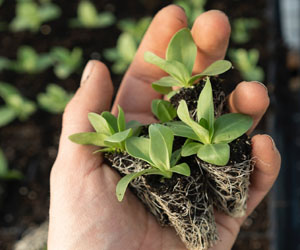 The Principle Of Wicking Systems
The Principle Of Wicking Systems
Wicking systems are a type of passive sub-irrigation method that relies on capillary action to transport water from a reservoir to the root zone of plants. The basic components of a wicking system include a water reservoir, a wicking medium (commonly soil or a soilless mix), and a growing container or bed with a wick that draws water up to the plant's roots.
The key principle behind wicking systems is the movement of water through porous materials, like soil or a specialized wicking fabric, from areas of high water concentration (the reservoir) to areas of lower water concentration (the root zone). This capillary action ensures a consistent and controlled water supply to the plants, making wicking systems highly efficient.
Advantages Of Wicking Systems
Water Efficiency: Wicking systems significantly reduce water wastage by providing moisture directly to the root zone. This targeted irrigation minimizes evaporation and runoff.
Reduced Labor: Once set up, wicking systems require minimal maintenance and are well-suited for urban gardens, container gardening, and raised beds, making them an excellent choice for those with limited time or space.
Improved Plant Health: Consistent moisture levels contribute to healthier and more robust plant growth. These systems help prevent overwatering, which can lead to root rot and other water-related plant diseases.
Drought Resilience: Wicking systems can conserve water and sustain plants during dry spells, making them a valuable tool in regions prone to drought.
Customizable Design: Wicking systems can be adapted to various scales, from small pots to large garden beds and even commercial agriculture, providing flexibility and adaptability to different needs.